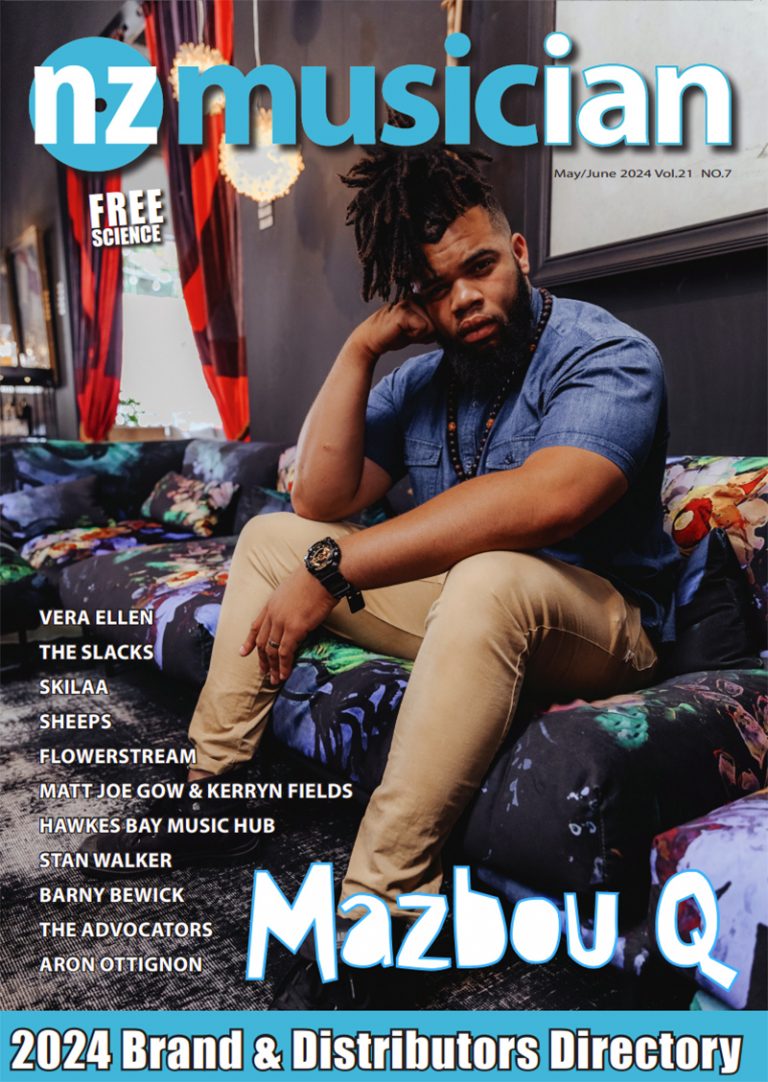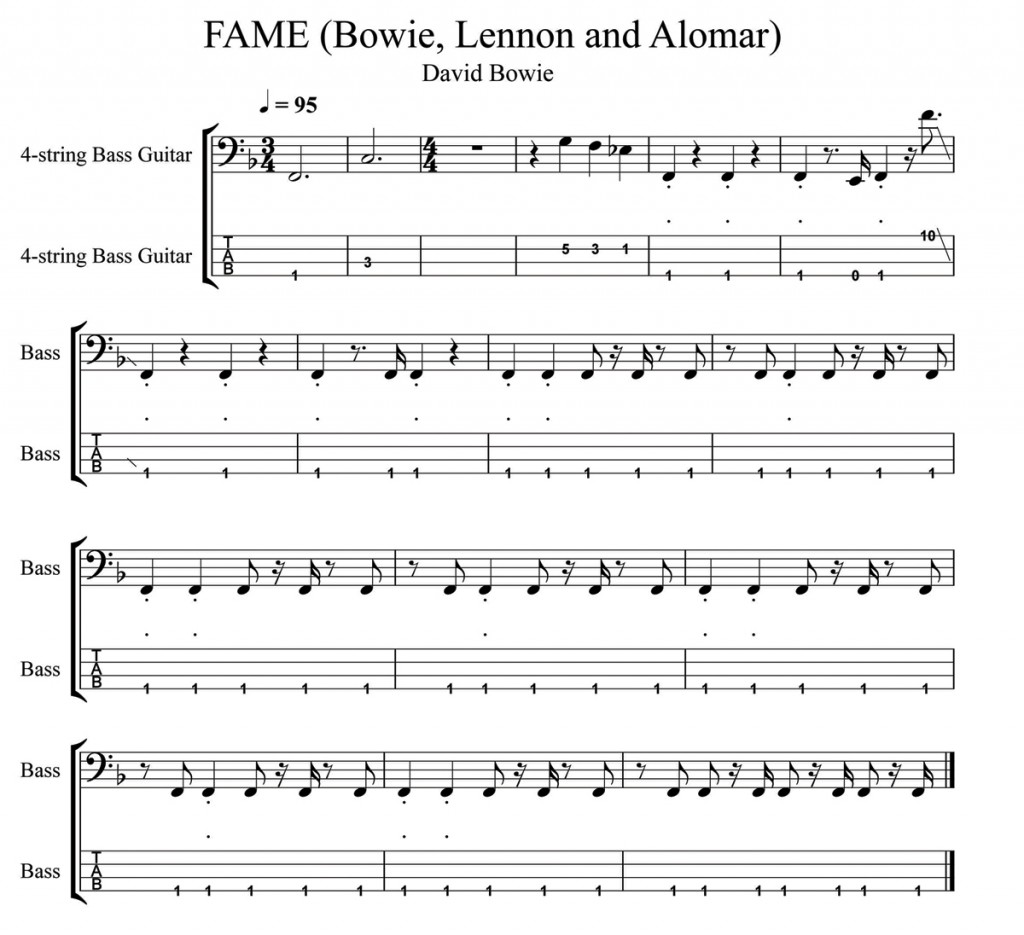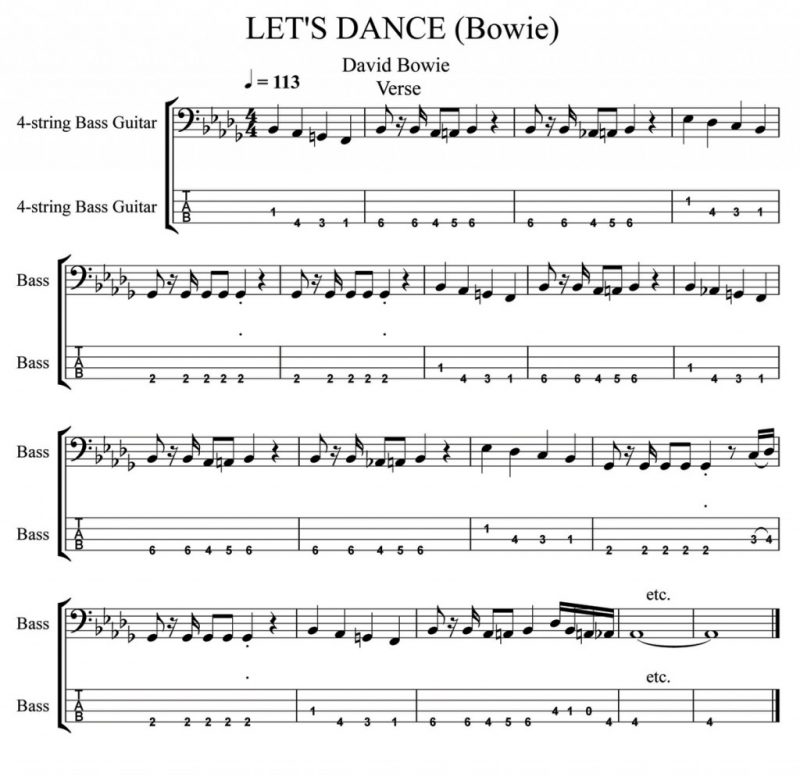Deep Thinking: And We Could Be Heroes…
Deep Thinking: And We Could Be Heroes…
This issue’s Deep Thinking column presented a dilemma. The last couple of years have seen the bass world lose two of its innovators and I provided columns in tribute to both. I was going to do some slap stuff for this issue, so as to avoid making the column into an obituary for great musicians.
Then, Lemmy left us, and the day before I started to write this, David Bowie joined him for the great jam session. I talked over the options with NZM’s editorial team and, as big a character as Lemmy was, we agreed to feature some Bowie lines.
The new problem was that it’s hard to pick just a few lines from a composer whose output has gone on since the 1960s. While Bowie didn’t play bass on the tracks I’ve transcribed, he always had the pick of the best players to draw from, who in turn created some amazing, yet often simple, lines. I started wanting to do an early one with Bowie’s long–term producer, Tony Visconti, on bass, The Man Who Sold The World from 1972. However, once I got stuck into the vast catalogue of Bowie on Youtube, I decided the answer would be to consult the oracle of Bowie knowledge, my Otago colleague, Dr. Ian Chapman. I wanted some funk, so we chose Let’s Dance (1983) and Fame (1975).
Emir Kassan played bass on Fame (which was written by Bowie, John Lennon and Carlos Alomar, Bowie’s guitarist) and the song is on the album ‘Young Americans’. The bass line is in the style that was known as ‘street funk’ in the UK – not sure what they called it in the US. The bass style was reminiscent of Bootsy Collins’ simplicity, with notes accenting the first and third beat of each bar. That might not sound funky, but have a listen!
I have transcribed the introduction. The song is in a very solid 4/4 metre apart from the ‘faded in’ piano F major chord at the beginning and the two 3/4 bars in the intro. These bars are followed by one bar rest for a rhythm guitar part and a pick up of three crotchets on bass in bar four. Bar six has a downward slide (glissando) from a high F on the second 1/16 note of beat four to the low F at the beginning of the following bar.
You will also notice that the notes are played quite short and staccato, emphasising the weight of the bass drum beats. By bar nine, Kassan starts to get a little more syncopated and locks in with the funkier drum pattern. Once the vocal starts, the rhythm section pattern is simpler, but the emphasis remains on beats one and three with semi-quaver anticipated notes on the last 1/16 note of beat two in most bars.
Carmine Rojas played bass on Let’s Dance, the title track of that album. It was produced by Nile Rodgers (who also played most of the guitar parts) and it has Tony Thompson on drums. It thus has half of the band Chic playing on it. The song also features a stunning guitar solo from Stevie Ray Vaughan.
The bass line is, again, deceptively simple. I have transcribed it from where the vocal comes in. The line switches between crotchets and short and funky two–bar riffs. It has a slightly odd construction in that the line is in three bar phrases, one with crotchets followed by two with the funky phrases. This construction goes on until Bowie reaches the pre-chorus where the bass simplifies into two bar sustained semibreves.
Let’s hope we all stay safe out there and the next issue of NZ Musician can feature some slappy stuff! It seems a dangerous place for musos at the moment.
Dr. Rob Burns is an Associate Professor in Music at the University of Otago in Dunedin. As a former professional studio bassist in the UK, he performed and recorded with David Gilmour, Pete Townsend, Jerry Donahue, Isaac Hayes, Sam and Dave, James Burton, Ian Paice and Jon Lord, Eric Burdon and members of Abba. Rob is currently a member of Dunedin bands Subject2change and The Verlaines.



